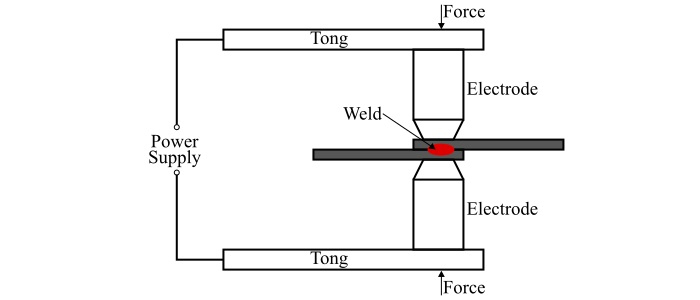
 Data Structure
Data Structure Networking
Networking RDBMS
RDBMS Operating System
Operating System Java
Java MS Excel
MS Excel iOS
iOS HTML
HTML CSS
CSS Android
Android Python
Python C Programming
C Programming C++
C++ C#
C# MongoDB
MongoDB MySQL
MySQL Javascript
Javascript PHP
PHP
- Selected Reading
- UPSC IAS Exams Notes
- Developer's Best Practices
- Questions and Answers
- Effective Resume Writing
- HR Interview Questions
- Computer Glossary
- Who is Who
What is Resistance Welding?
Resistance Welding
Resistance welding is the process of joining of metals by applying mechanical pressure and by passing high electric current for a length of time through the metal area which is to be joined.
The process of resistance welding was discovered by Professor Elihu Thompson in 1885 in Philadelphia. It was an accidental discovery, while experimenting with a spark coil operated form a bank of batteries, he accidentally welded two steel rods of about 0.635 diameter.

The principle of resistance welding is the production of heat in the weld joint by passing a heavy current through the parts and this being followed by the application of mechanical pressure which welds the plastic metal and refines the grain structure. Therefore, it will be seen that a resistance welding machine must be capable of
Supplying an electric current of the magnitude to produce the necessary heat for welding.
It must incorporate electrodes of suitable design to conduct the current to the parts at the right place.
Applying mechanical pressure to the weld at the correct position and time.
Advantages of Resistance Welding
The advantages of the resistance welding are list as follows
It is a faster method of welding of two pieces.
The wastage of the metal is very little in the case of resistance welding.
With the resistance welding, the welding process can be accurately controlled.
Resistance welding is suitable for large quantity production.
Resistance welding requires no filler metal.
With resistance welding, different shapes and sections can be welded.
The welds made by resistance welding are consistently uniform.
Disadvantages of Resistance Welding
The resistance welding process has several disadvantages that are given as follows −
The initial maintenance costs of the resistance welding are very high.
Resistance welding is limited only to lap joints.
The spot welds made with resistance welding have low tensile and fatigue strength.
As the equipment used for resistance welding are heavy, therefore, they are not portable.
Resistance welding requires high electric power.
Resistance welding process is less efficient for high conductive materials.
Applications of Resistance Welding
Resistance welding is mainly used in the mass production of welding sheet metal, wires and tubes, etc.
Resistance is used for making cutting tools.
Resistance welding is used in welding of aircraft and automobile parts.
Resistance welding is used for welding process in making fuel tanks of cars, trucks, tractors, etc.
Projection welding (a types of resistance welding) is widely used in the production of nuts and bolts.

